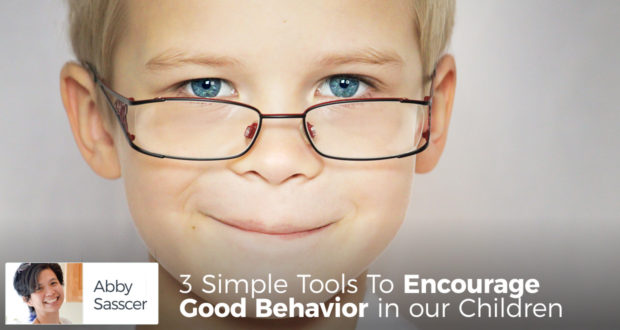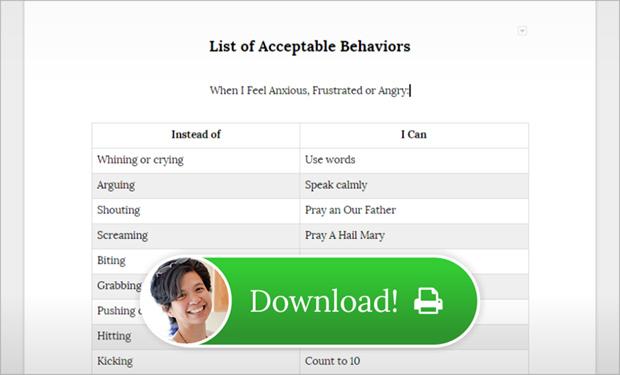Reminiscing my Catholic school years in the Philippines, one of my fondest memories was attending our Good Manners and Right Conduct classes.
During GMRC classes, our teachers did a beautiful job instructing and modeling good manners, proper etiquette, character development, Christian virtues and overall good behavior.
They provided us with instructional hand-outs and textbook materials intertwined with interesting stories and vignettes. After our lessons, we were encouraged to role play in small groups and present little skits in front of our class.
Even when we were outside the classroom, there were plenty of opportunities to practice and reinforce good behaviors we had learned in class.
Good Behavior Is a Learned Skill
When I began homeschooling my own children, I seem to have forgotten that good behavior is a learned skill. On hectic days, I automatically assume that my children are already born with the knowledge of good behavior and so I simply expect it from them on a daily basis.
But after working with children with special needs, my eyes were slowly opened. I realized that my children don’t always know how to behave properly, not because they want to make my life difficult, but because they are still very much in the process of learning.
And just as children are not born knowing the skills of reading, writing and arithmetic, I have to constantly remind myself that learning good behavior is a skill that takes time, practice, and patience.
1 . Provide Children a List of Acceptable Behaviors
Providing our children a list of alternative and acceptable ways to behave is an essential tool in teaching good behavior.
Aside from simply telling our children what not to do, we can calmly teach them what to do instead.
The list below can be posted in a strategic place in the home such as the kitchen, classroom or playroom.
List of Acceptable Behaviors
When I Feel Anxious, Frustrated or Angry:
Instead of – I Can
Whining or crying – Use words
Arguing – Speak calmly
Shouting – Pray an Our Father
Screaming – Pray A Hail Mary
Biting – Pray The St. Michael Prayer
Grabbing – Play with another toy
Pushing or shoving – Take a five-minute break
Hitting – Take deep breaths
Kicking – Count to 10
Pulling – Squeeze a stress ball
Teasing or bullying – Pray My Guardian Angel Prayer
Scowling – Wash My Face
Stomping Away – Say, “I need a break.”
Throwing Things – Get a drink of water
Having a tantrum – Go quietly to my room
2 . Encourage Good Verbal Behavior
As children get older, they will begin to express their emotions, especially anger and frustration, in their own words. Below is a list of phrases that can help our children express themselves in more appropriate ways.
Please note that this list is for parents only and should not be posted for little ones to see. It is available as the second page in the download link above.
When Your Child Says – Encourage Your Child To Say
Go Away! – I need some alone time, please.
Shut up! – I need some quiet time, please.
You’re so dumb! – Maybe we can try that again.
I hate it! – I did not like that at all.
I don’t want to! – Can I try that later?
You’re not good at that! – Nice try!
You hurt my feelings! – That hurt my feelings.
I don’t need your help! – I can do it myself.
3 . Model Calm Behavior Yourself
Victor Emil Frankel, a Holocaust survivor, once wrote:
“Between stimulus and response, there is a space. In that space is our power to choose a response. In our response lies our growth and our freedom.”
I’ve always considered this so-called “space” as something very sacred. So between any action and reaction, I always try to linger in this sacred space for a time, especially when teaching my children good behavior.
Being a good example ourselves is probably the best (and hardest) way to teach our children good behavior.
But with self-awareness, the above-mentioned teaching tools and God’s amazing love and grace, it can be accomplished!
Parents’ Prayer For Their Children
O God the Father of mankind, who hast given unto me these my children, and committed them to my charge to bring them up for Thee, and to prepare them for eternal life: help me with Thy heavenly grace, that I may be able to fulfill this most sacred duty and stewardship.
Teach me both what to give and what to withhold; when to reprove and when to forbear; make me to be gentle, yet firm; considerate and watchful; and deliver me equally from the weakness of indulgence, and the excess of severity; and grant that, both by word and example, I may be careful to lead them in the ways of wisdom and true piety, so that at last I may, with them, be admitted to the unspeakable joys of our true home in heaven, in the company of the blessed Angels and Saints. Amen.

 Seton Magazine Catholic Homeschool Articles, Advice & Resources
Seton Magazine Catholic Homeschool Articles, Advice & Resources

